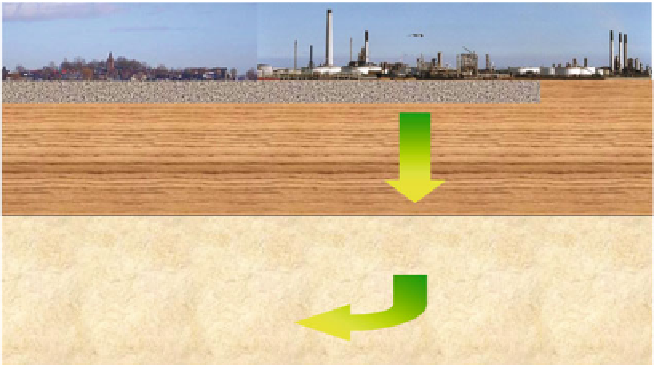Environmental Engineering Reference
In-Depth Information
21.3.3.3 Management Scenarios
This section helps to define management scenarios for the Megasite that are cost-
effective and sustainable. This implies that in the long-term a maximum risk
reduction will be achieved within the budget available. The following activities need
to be carried out:
•
define the feasibility of management scenarios for each cluster (including risk
reduction objectives and priority);
•
perform cost-efficiency and risk reduction analysis;
•
prioritize and optimise management scenarios for the Megasite.
In the Example for The Rotterdam Harbour shown in Fig.
21.9
as a concep-
tual site model, Strategies with combinations of measures using pump and treat, In
Situ remediation and Natural Attenuation were selected for further evaluation. Cost-
benefit analyses also need to be performed at this stage. In Fig.
21.10
the costs and
forecasted effects on groundwater quality of different scenario's are shown for The
Rotterdam Harbour case.
21.3.3.4 Implementation
Once the optimal final scenario has been selected by the stakeholders, it needs to
be implemented, monitored and reviewed. An implementation plan will need to be
developed within the IMS to support successful site management. Part of that is a
monitoring programme at the planes of compliance to control the performance of
polders
harbour
Anthropogenic layer
SOURCE
Holocene
P&T
POC2
1
st
Aquifer
ENA
POC3
Fig. 21.9
Conceptual site model of The RotterdamHarbour, showing a mixed strategy of measures
at planes of compliances 2 and 3: P&T
pump and treat, and ENA (Enhanced Natural Attenuation;
In Situ bioremediation including Natural Attenuation), as an example of a Megasite management
scenario
=



























Search WWH ::

Custom Search